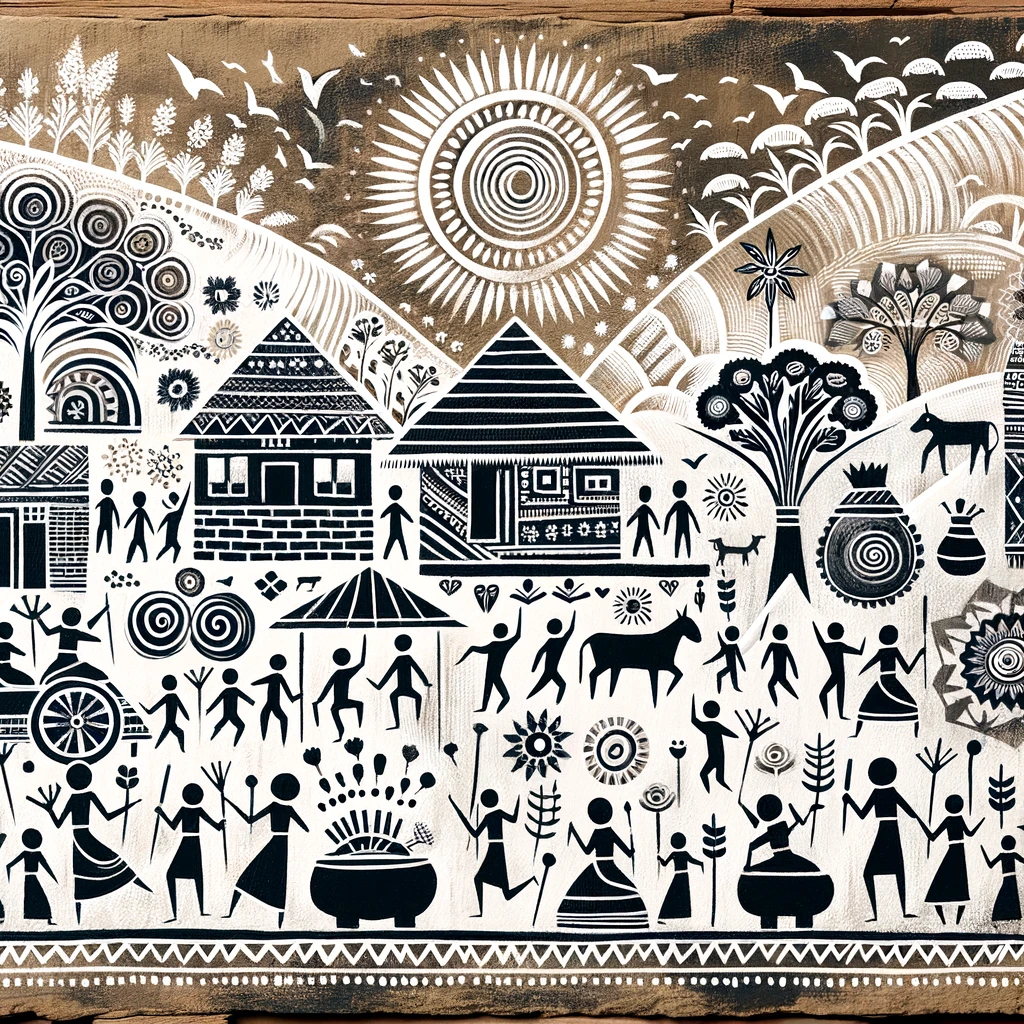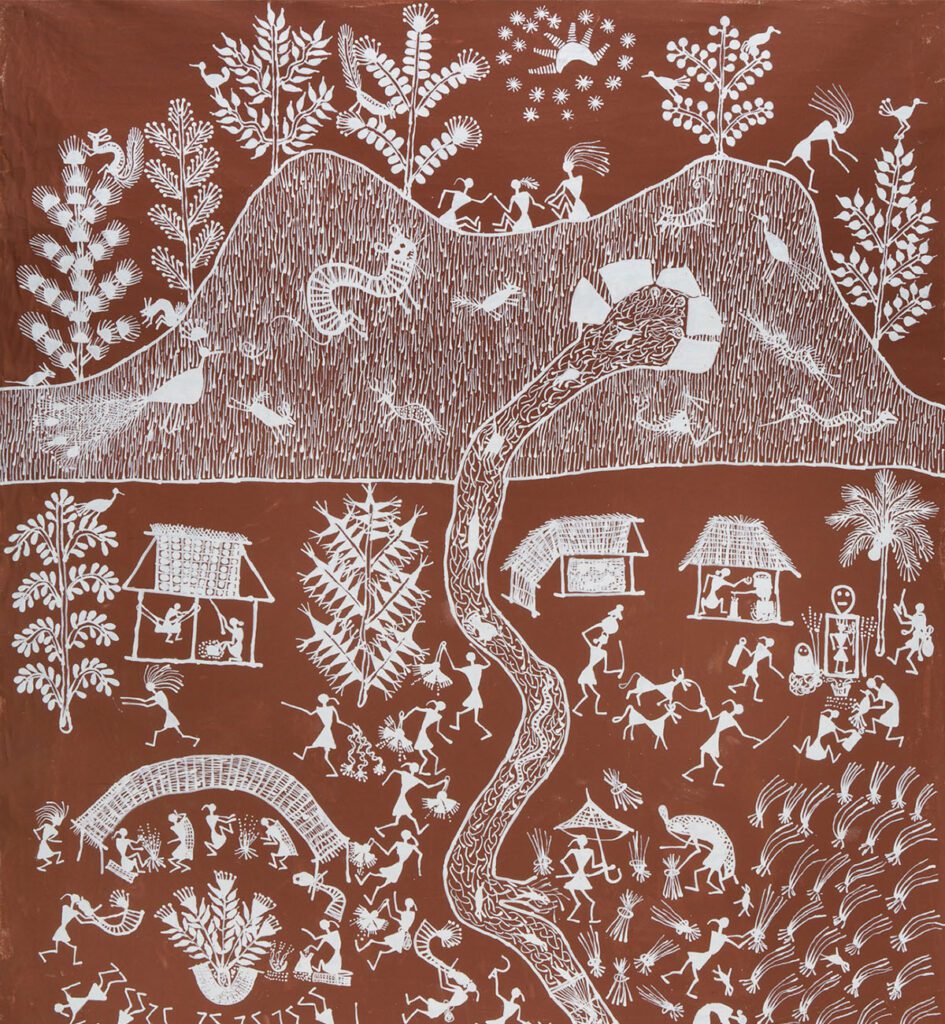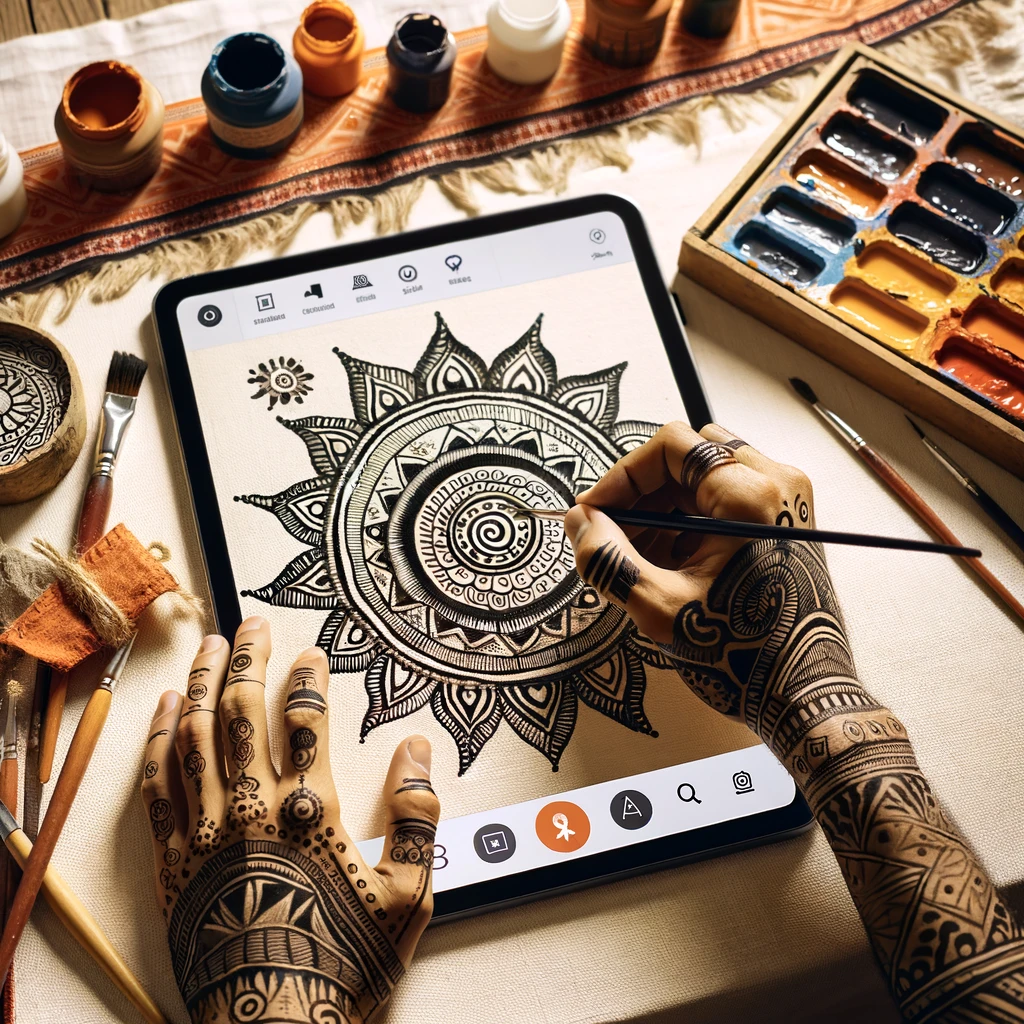Uncover the ‘History of Warli Art’ in our enlightening guide, tracing its roots from ancient tribal traditions to modern artistic expressions. Delve into its rich cultural essence and discover online courses to craft your own Warli masterpieces, bridging past and present through art.

Table of Contents
Warli art, a remarkable facet of India’s rich tribal heritage, has enchanted art lovers and cultural enthusiasts around the world. Its simplicity, monochromatic motifs, and deep connection with nature and daily life make it a unique and captivating art form. This post aims to explore the origins, evolution, cultural significance, and ways to learn Warli art, enriching your understanding of this ancient artistic tradition.
Origins of Warli Art
The Warli tribe, indigenous to the Maharashtra and Gujarat regions of India, has preserved the Warli art form for centuries, possibly dating back to the 10th century. This art was primarily executed on the mud walls of village houses for decorative and ceremonial purposes, depicting scenes of human figures engaged in activities like hunting, dancing, and farming, alongside animals and natural elements. The simplicity of the geometric shapes—circles, triangles, and squares—belies the profound symbolism they carry, representing various elements of nature and life.
An Ancient Story Among Tribes
Among the many legends associated with Warli art, one ancient tale stands out, illustrating the art form’s deep-rooted cultural significance. It’s said that Warli art originated from the observations of nature and the cosmos. According to folklore, a Warli painter once dreamed of a god who showed him a painting that depicted the harmony between humans and nature. Inspired by this vision, the painter began using the same symbols from the dream, which have been passed down through generations. This story underscores the intrinsic connection Warli art has with the natural world and the spiritual reverence the Warli people hold for their surroundings.
Evolution of Warli Painting
Over time, Warli painting has transitioned from its traditional roots to find a place in the contemporary art world. Artists like Jivya Soma Mashe have been instrumental in this transformation, pioneering the use of Warli in modern art practices while preserving its traditional essence. Today, Warli art is not just confined to the walls of tribal huts but has expanded to canvas, digital formats, and even urban art installations, showcasing its adaptability and timeless appeal.

Cultural Significance of Warli Art
Warli art is more than just decorative; it’s a medium of storytelling and preserving the folklore and traditions of the Warli tribe. The recurring themes of harvest, festivals, and dances reflect the community’s intimate relationship with nature and their social fabric. This art form serves as a window into the tribe’s philosophy, beliefs, and way of life, offering invaluable insights into India’s tribal heritage.
Warli Art Today

Despite its ancient origins, Warli art continues to thrive, integrating into modern design and art while facing challenges such as copyright issues and cultural dilution. Efforts by artists and cultural organizations are focused on preserving the authenticity of Warli painting and promoting it as an invaluable part of India’s cultural legacy.
Learning Warli Art
For those interested in learning Warli art, several authentic online platforms and courses offer insights into its traditional techniques and motifs. Here are a few recommendations:
- Udemy’s Warli Art Basic Course: A comprehensive introduction to the geometric shapes, lines, and symbols unique to Warli art.
- Kamal Fine Art Institute’s Online Warli Painting Classes: Offers courses for both kids and adults, covering basic to advanced Warli painting techniques.
- Rooftop’s Warli Maestro Course: Learn from the Mhase Family, renowned for their contributions to Warli art, covering both traditional and contemporary approaches.
- These platforms provide an excellent opportunity to delve into the world of Warli painting, guided by experienced artists and instructors.
Conclusion
The history of Warli art is a fascinating journey through time, reflecting the enduring spirit and cultural depth of the Warli tribe. As this art form continues to evolve and captivate audiences worldwide, it remains vital to recognize and preserve its unique heritage and significance. Through understanding and learning Warli art, we pay homage to its ancient roots and ensure its legacy endures for future generations.
What is Warli art?
Warli art is a traditional form of tribal art from India, known for its simplistic motifs and depiction of daily life and nature.
Who are the Warli people?
The Warli are an indigenous tribe from the Maharashtra and Gujarat regions of India, with a rich cultural heritage and traditional art form known as Warli painting.
How old is Warli painting?
Warli painting is believed to date back to the 10th century, making it one of the oldest forms of art practiced by tribal communities in India.
Can I learn Warli art?
Yes, Warli art can be learned through various online courses and workshops that teach the traditional techniques and motifs used in this art form.
How can I support Warli artists?
Supporting Warli artists involves purchasing authentic artworks, promoting awareness of Warli art, and engaging with cultural programs that highlight this unique art form.
